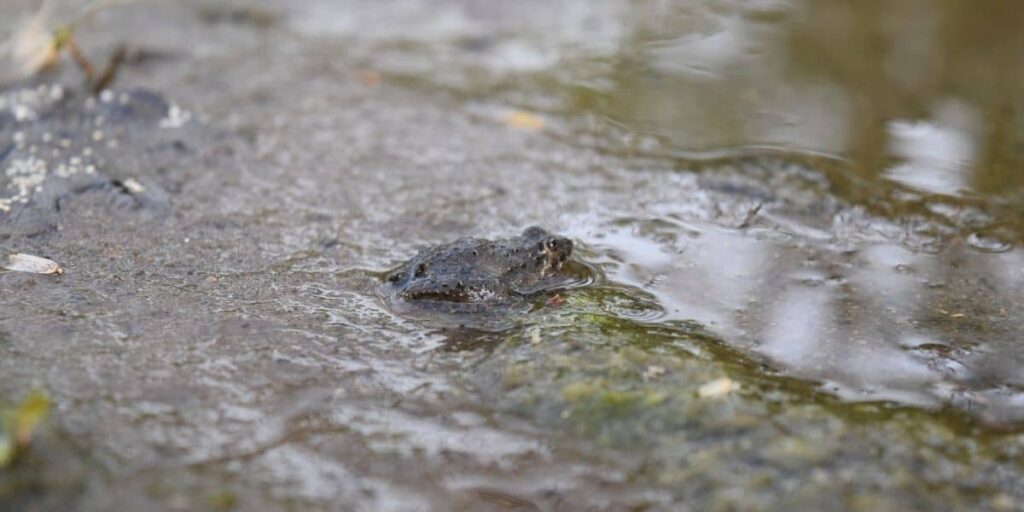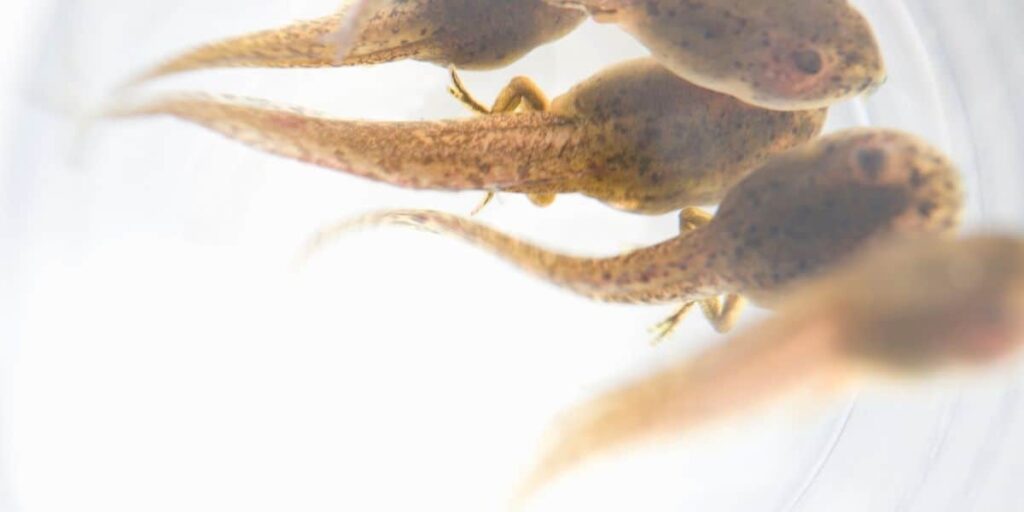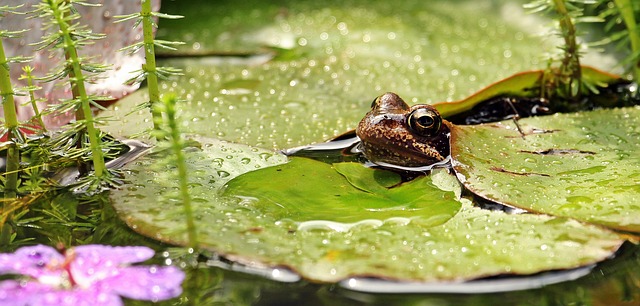Frogs are often found living around water, they are amphibians which means that they spend equal amounts of time in and out of the water. But just because they can go into the water, that doesn’t mean that they can breathe under there, right? If you have a pet frog that is spending a lot of time underwater, you might become concerned that they are putting their life at risk; so, can frogs breathe underwater?
The great news is that if your froggy friend seems to prefer an aquatic lifestyle then this won’t do it any harm. While frogs cannot breathe through their mouth or nose when underwater, they are able to absorb oxygen through their skin which means that they can, quite happily, spend long hours enjoying the water.
Frogs are pretty amazing animals so owning one as a pet seems a great idea for many people. However, understanding their behavior and abilities, such as breathing underwater is important in providing them with the best possible care.
How Frogs Breathe Underwater
Frogs are amphibians, and while many of us understand this to mean that an animal can live both in and out of the water, it also has a much more interesting meaning. To be an amphibian means that a creature has the ability to breathe through its skin.
While this process doesn’t involve inhaling and exhaling as is the case normally, oxygen can be taken in through the skin and this means that these animals can spend an astonishingly long time underwater.
In the case of the frog, they may be able to submerge themselves for months at a time! For many frog species, particularly those found in places like the UK, where winters are cold, this ability is excellent for hibernating.
As the weather turns cooler, frogs will often hide under a pile of leaves, an old log, or even at the bottom of a pond beneath the mud. This incredible ability to breathe underwater means that they can remain there until things warm up on the surface.

Additionally, the less active that a frog is, the longer it will be able to remain in the water without breathing, in the traditional sense of the word. There are some frog species such as the Borneo flat-headed frog that cannot breathe using lungs and relies solely on this type of breathing.
Furthermore, some frogs, like the Titicaca water frog, are specially adapted to make the most of time spent under the water and have larger skin surface areas thanks to wrinkling of the skin.
These frogs are so adept at using cutaneous respiration that there have been records of them living as deep as 400ft!
When frogs are on land, they breathe in a manner that is very similar to humans, this process is known as gular pumping and involves drawing air into the lungs through the throat before expelling it back out.
However, when they are underwater, frogs use a method called cutaneous respiration which involves oxygen entering the bloodstream through the skin. Similarly, carbon dioxide leaves the frog’s body in the same way.
What About Tadpoles?
Frogs begin spawning in the spring and wherever there is water, you might find frogspawn. As children, many of you will have been taken on school outings to look at pond life and see tadpoles darting around near the surface of the water. It’s safe to say that, for this part of the frog’s life, water is essential, and the tadpoles never exit their aquatic home.
That being said, nature always has an exception, and, in this case, it is the Sri Lankan rock frog that is considered to be extremely vulnerable.
Its tadpoles cannot survive underwater and are one of the very few frog species whose tadpoles live on land. The frogs will typically lay eggs near a water source to allow the tadpoles to hunt along the riverbanks.
So, what does this mean in terms of breathing? Well, tadpoles are frog larva and as a result, they have special features that help them develop into fully-fledged frogs.
Meanwhile, they also need body parts that allow them to thrive underwater and as such, have gills, tails, and an organ which is known as an LLS.
This organ is designed to sense changes in the water caused by small vibrations and is used as a navigation aid. Many fish and other water-dwelling creatures benefit from an LLS but as the tadpole develops into a frog, this organ disappears.
The Metamorphosis
Tadpoles undergo a transformation known as metamorphosis; during this time, they will develop into adult frogs and what happens is truly a miracle of nature. The tadpoles will initially begin to develop legs and at this time, their lungs will begin to form.

While other changes are going on, once the lungs are developed, the tadpole will be able to move to the surface of the water to breathe air for the first time.
Are There Any Frogs That Can’t Breathe Underwater?
All frogs are amphibians, but some have adapted to better thrive on land, and these are known as terrestrial amphibians. While many of these creatures are unable to perform cutaneous respiration like their aquatic cousins, they are still able to spend a considerable amount of time underwater.
Take tree frogs for example, which spend most of their lives, yes, you guessed it, in trees. There isn’t much water up there among the branches but when a tree frog does come down to take a dip, they are able to hold their breath for several hours.
On average, a terrestrial amphibian such as this might be able to remain underwater for anywhere between four and seven hours!
Conclusion
Frogs are one of the most fascinating animals that can be owned as exotic pets. While they might not be the most sociable creatures, they certainly have many interesting behaviors that pet owners will enjoy observing.
One of these is that frogs are able to remain underwater for very long periods of time owing to a process known as cutaneous respiration which allows them to ‘breathe’ through their skin.
What is even more interesting is that while some species of frog are predominantly land-dwelling, they still have an incredible ability to hold their breath for up to seven hours at a time, meaning that spending prolonged periods in the water is entirely possible.




